Chemistry Facilities
The Chemistry Department is housed in the Mark Jefferson Science Complex. Between 2009 and 2012, the Mark Jefferson building was totally renovated and a significant new addition was attached to the west side of the building (connecting it to Strong Hall). The finished Science Complex features interactive, technologically-modern classrooms, state-of-the-art teaching and research labs, and dedicated student study/interaction areas. The completed Science Complex received LEED® Gold certification due to environmentally friendly features such as an energy efficient design with lots of natural light and heat exchangers, a rain garden to help with stormwater management, and a green roof. The building provides ample opportunity for interdisciplinary interactions with the Biology, Physics/Astronomy, Psychology and Geology departments.
Inside the Mark Jefferson Science Complex
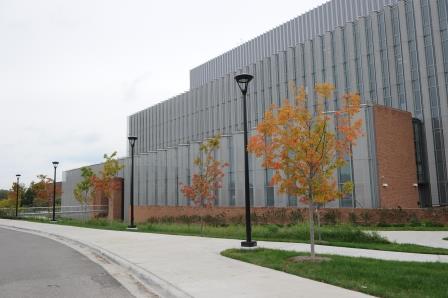

Exterior and Interior Public Spaces
The original Mark Jefferson building was constructed in the late 1960's. Due to the ninety-million dollar addition/renovation completed in 2012, it is all effectively brand new space. Obviously the construction project resulted in an increase in space, improved ventilation and climate control, and improved functionality. One of the major improvements was the creation of spaces for students to study or just to hang out. One of the most attractive features of the addition is the atrium area. It is a bright, open area with chairs and study tables for students to use. At the top of the atrium is the "spherical classroom" that houses a planetarium. There are also numerous study rooms, an open computer lab and an Eagle Cafe.
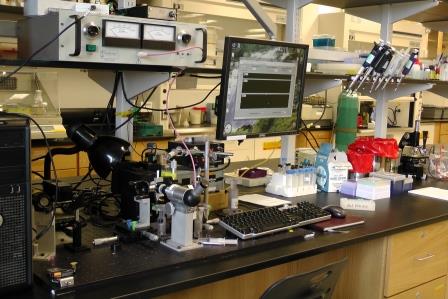

Equipment/Instrumentation
The Chemistry Department firmly believes in providing our students with a hands-on learning experience. It is not unusual for universities to try to impress students with long lists of fancy equipment that they have on campus. At many schools, the reality is that most of that fancy equipment is only used by a full-time technical staff or Ph.D. students. Our students are trained on our equipment and get to use it. This gives our students an advantage when they apply for industrial jobs or graduate school.
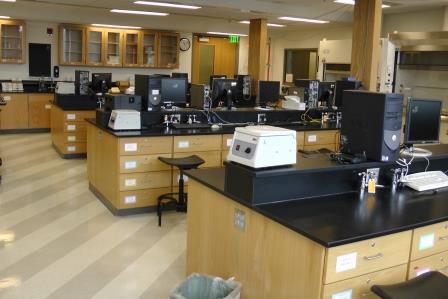

Introductory Teaching Laboratories
Unlike most universities the size of EMU, all chemistry laboratories are taught by faculty members who are present in the lab. Most of the introductory laboratories consist of two connected rooms, each containing stations for 24 students. A graduate assistant is present in each room and the faculty member circulates between the two rooms. There is a station for each individual student, although many experiments are done with one-or-more lab partners. Glassware and routinely-used equipment is stored in drawers at each station or in cabinets surrounding the periphery of each lab. All of the labs are located on exterior walls so there are windows and natural lighting.
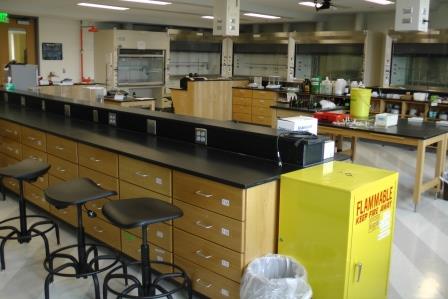

Upper-Level Teaching Laboratories
Upper-level labs are taught exclusively by department faculty. These labs are similar in physical size to the introductory labs, but generally contain only 10 to 18 lab stations since the labs make more extensive use of equipment. With the exception of the Biochemistry lab, the other upper-level teaching labs are organized in suites of related, interconnected rooms. There is a suite of organic teaching labs and a suite of analytical/physical labs. This arrangement allows students from different courses to readily share equipment and provides maximum teaching flexibility.
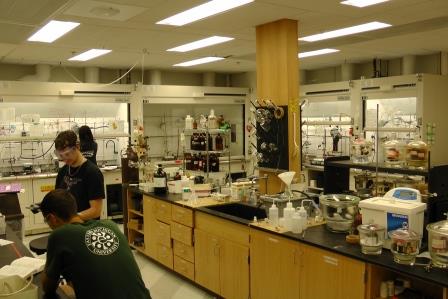

Chemistry Research Laboratories
Faculty working one-on-one with students is at the heart of the research experience at EMU. All of our research labs were designed to facilitate these student-faculty interactions. So, besides hoods, lab benches, and equipment, students will find cubicles and/or desk space in most research labs. Whenever possible, faculty offices are located in close proximity to their labs to make them accessible to their research students. Most labs are large rooms, or suites, which are shared by multiple research groups. This facilitates the sharing of ideas and equipment and allows research groups to grow (or shrink) in accord with student availability.
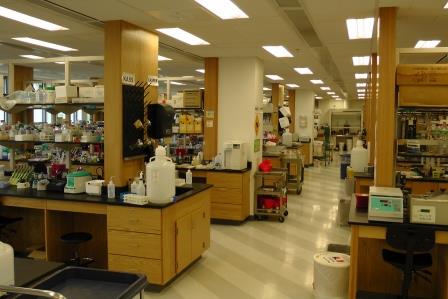

Biochemistry/Biology Research Laboratory
The Cell and Molecular Biology and Biochemistry (CMBB) interdisciplinary research lab is a special feature of the science complex. It constitutes about one-third of the building's fourth floor, and is essentially contained in one great room with 21 feet of linear bench bench/desk space for each of 14 biology and biochemistry faculty; a large room for shared equipment, freezers, autoclaves, and a dishwasher; a tissue culture room; a student office with carrels; and a conference room equipped with projector and screen for presentations and meetings.
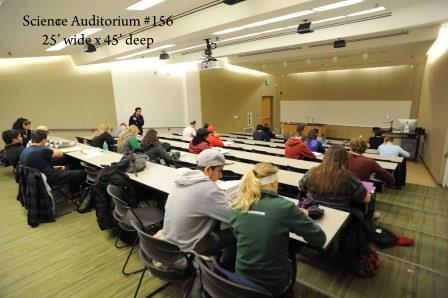

Lecture Classrooms
Most of the lecture rooms in the Science Complex accommodate approximately 40 students. The Chemistry Department also utilizes several smaller lecture rooms and two larger auditoria (pictured) with maximum seating capacities of 68. However, no chemistry department class has a cap of more than 60 students, which allows for more student-faculty interaction than in larger impersonal lectures which are common at many universities. All lecture classrooms are equipped with projectors, document cameras, screens and whiteboards to allow for maximum flexibility in classroom activities.

